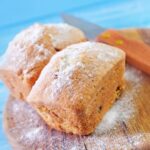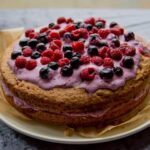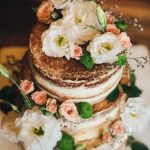Cake decorating is an art form that allows bakers to transform a simple cake into a masterpiece. And at the heart of every beautifully decorated cake lies the icing. Icing not only adds flavor and sweetness, but it also plays a crucial role in giving a cake its finished look. Whether you are a novice baker or a seasoned pro, understanding how to make the perfect icing for cake decorating is essential.
Icing serves as the canvas upon which all other decorations come to life. It provides a smooth base for intricate piping and designs, creating an eye-catching centerpiece for any occasion. The right type of icing can enhance the overall aesthetic appeal of a cake, making it visually stunning and irresistible.
In this article, we will explore the different types of icing commonly used in cake decorating, including buttercream, royal icing, and fondant. We will delve into the essential ingredients required to make these icings and provide step-by-step guides on how to achieve the perfect consistency for each type. From mastering basic buttercream to creating intricate designs with royal icing and fondant, we will cover everything you need to know to elevate your cake decorating skills.
So whether you are celebrating a special occasion or simply want to impress your friends and family with your baking prowess, join us as we embark on this journey into the world of icing for cake decorating. Get ready to unleash your creativity and take your cakes from ordinary to extraordinary with our comprehensive guide on how to make icing for cake decorating.
Understanding the Different Types of Icing for Cake Decorating
Buttercream, royal icing, and fondant are three of the most commonly used types of icing for cake decorating. Each type has its own unique qualities and uses, making it important to understand the differences between them.
Buttercream is a classic type of icing made from butter, powdered sugar, and flavorings such as vanilla extract. It is smooth, creamy, and easy to work with, making it a popular choice for both beginner and experienced bakers. Buttercream can be easily colored and flavored to match any theme or taste preference. It is often used for piping borders, rosettes, and lettering on cakes.
Royal icing is a type of icing that hardens when exposed to air. It is made from powdered sugar and egg whites or meringue powder. Royal icing dries to a firm consistency that makes it ideal for creating intricate designs such as flowers or delicate lace patterns on cakes. This icing is also commonly used for piping intricate details on gingerbread houses and cookies. Royal icing can be tinted with food coloring to achieve vibrant colors.
Fondant is a smooth, pliable icing that can be rolled out like dough and draped over cakes to create a flawless finish. It is made from melted marshmallows, powdered sugar, and water or other liquid flavorings. Fondant provides a clean canvas for cake decorators to work on and allows for creative sculpting and modeling of figures or decorations. It can also be easily dyed with gel food coloring to achieve vibrant hues.
Understanding the different types of icing will help you choose the right one for your cake decorating needs. Whether you prefer the smoothness of fondant, the versatility of buttercream, or the elegance of royal icing, each type has its own unique qualities that can take your cake decorating skills to new heights.
| Type of Icing | Features |
|---|---|
| Buttercream | Smooth, creamy texture; easy to work with; can be colored and flavored |
| Royal Icing | Dries to a firm consistency; ideal for intricate designs; can be tinted with food coloring |
| Fondant | Smooth, pliable texture; can be rolled out and draped over cakes; allows for sculpting and modeling |
Essential Ingredients for Making Icing
When it comes to making icing for cake decorating, having the right ingredients is crucial. The right combination of sugar, butter, flavorings, and other key components can make a significant difference in the taste, texture, and overall success of your icing. In this section, we will explore the essential ingredients needed for making icing and how each ingredient plays a role in achieving the desired result.
Sugar
Sugar is a primary ingredient in most icings as it provides sweetness and structure to the mixture. Powdered sugar or confectioner’s sugar is commonly used due to its fine texture, which dissolves easily and creates smooth consistency. It’s important to sift powdered sugar before using it to remove any lumps that can affect the texture of your icing.
Butter
Butter adds richness and flavor to icing while providing a smooth and creamy consistency. It’s crucial to use unsalted butter when making icing so you can control the amount of salt in your recipe. Room temperature butter is often recommended as it blends more easily with other ingredients. It’s important to avoid using melted or overly softened butter as it can lead to runny or greasy icing.
Flavorings
Flavorings such as vanilla extract, almond extract, or citrus zest are used to enhance the taste of your icing. They add depth and complexity to your creation and allow you to customize the flavor based on personal preferences. While extracts are commonly used, you can also experiment with other flavors like cocoa powder, coffee extract, or fruit purees for unique variations.
Liquid
Liquid ingredients like milk or heavy cream are added to achieve the desired consistency of your icing. These liquids not only help bind all the ingredients together but also make the mixture easier to spread or pipe onto cakes. Start by adding small amounts of liquid at a time until you reach the desired thickness. Be cautious not to overdo it as too much liquid can make your icing too thin and difficult to work with.
Additional Ingredients
Depending on the type of icing you are making, there may be additional ingredients needed. For example, meringue powder is used in royal icing recipes for stability and faster drying time. For fondant icing, gelatin is often added for elasticity. Other optional ingredients include food coloring for tinting your icings or chocolate for flavor variation.
By understanding the importance of each ingredient and how they contribute to the overall success of your icing, you’ll be able to create delicious and visually appealing cake decorations that will impress everyone. Now that we’ve covered the essential ingredients for making icing, let’s move on to the next section where we will provide a step-by-step guide on how to make basic buttercream icing for cake decorating.
Step-by-Step Guide
Gather Your Ingredients
To make basic buttercream icing, you will need the following ingredients:
- 1 cup (2 sticks) of unsalted butter, at room temperature.
- 4 cups of powdered sugar.
- 1 teaspoon of vanilla extract.
- 2 tablespoons of milk (or more if needed).
Make sure to have all these ingredients ready before you begin.
Cream the Butter
Start by creaming the butter in a large bowl. You can use an electric mixer or do it by hand with a wooden spoon. Creaming the butter means mixing it until it becomes light and fluffy. This process ensures a smooth and airy texture for your icing.
Add the Powdered Sugar Gradually
Once the butter is creamed, gradually add the powdered sugar to the bowl. It is important to add the sugar in small amounts to prevent lumps from forming. After adding each portion of sugar, mix well until fully incorporated before adding more. Keep repeating this step until all the powdered sugar has been added.
Flavor and Thin Out the Icing
After adding all the powdered sugar, mix in the vanilla extract. This will give your icing a delicious flavor. At this point, your icing may be quite thick and stiff. To achieve a smoother consistency that is easier to spread or pipe onto cakes, add milk gradually while mixing. Add one tablespoon at a time until you reach your desired consistency.
Optional Additions
While basic buttercream icing is delicious on its own, you can also experiment with different flavors and colors by incorporating additional ingredients. For example, you can add cocoa powder for a chocolate-flavored icing or food coloring for vibrant hues. Simply mix these extras into your icing after achieving your desired consistency.
Follow these steps, and you’ll have a basic buttercream icing ready for your cake decorating endeavors. Remember to store any leftover icing in an airtight container in the refrigerator, and let it come to room temperature before using it again. With this versatile icing recipe, you can create beautiful designs and elevate your cake decorating skills. So let your creativity flourish as you decorate cakes with delicious buttercream icing.
Mastering Royal Icing
Royal icing is a popular choice for cake decorators due to its smooth finish and versatility. Whether you are creating intricate designs or simply need a sturdy icing for piping, mastering the consistency and piping techniques of royal icing is essential. Here are some tips and techniques to help you achieve perfect royal icing consistency and piping.
First, let’s talk about achieving the right consistency for your royal icing. The consistency of your icing will depend on the specific project you are working on. For outlining and creating fine details, a thicker consistency is needed, while flooding or filling larger areas requires a thinner consistency.
To achieve the desired consistency, start by preparing your royal icing according to the recipe instructions. Then, adjust the consistency by adding small amounts of water or powdered sugar until you reach the desired thickness.
In addition to achieving the right consistency, proper piping techniques are crucial for creating beautiful designs with royal icing. One technique that can make a big difference in your results is using a pastry bag fitted with different types of tips. Different tips allow you to create various shapes and patterns. For example, round tips are ideal for outlining and lettering, while star tips can create beautiful rosettes and borders.
Another important technique is applying consistent pressure when piping. It’s important to apply even pressure with your hand when squeezing the pastry bag to ensure consistent lines or shapes. Practicing on parchment paper or a practice board before working directly on a cake will help you become more comfortable with applying pressure.
Lastly, it’s important to remember that patience is key when working with royal icing. Take your time when piping intricate designs and be sure to allow ample drying time between layers or colors to prevent smudging.
By mastering the tips and techniques mentioned above, you’ll be well on your way to achieving perfect royal icing consistency and creating stunning designs on your cakes.
Table: Royal Icing Techniques
| Technique | Description |
|---|---|
| Consistency | Thicker consistency for outlining and fine details, thinner consistency for flooding larger areas. |
| Tips | Use different tips to create various shapes and patterns – round tips for outlining and lettering, star tips for rosettes and borders. |
| Pressure | Apply consistent pressure when piping to ensure even lines or shapes. |
| Patience | Allow ample drying time between layers or colors to prevent smudging. |
Creating Beautiful Buttercream Designs
Buttercream icing is a versatile and popular choice for cake decorating because of its creamy texture and ability to hold various designs. With a few techniques and some practice, you can create stunning buttercream designs that will impress your friends and family. In this section, we will explore how to pipe borders, rosettes, and lettering using buttercream icing.
- Piping Borders: Piping a border around the edges of your cake adds a nice finishing touch and can help define the overall design. To pipe a border, fill a piping bag fitted with a small round tip with buttercream icing.
Hold the bag at a 45-degree angle to the cake and apply even pressure to form a continuous line of icing around the edge. You can choose from different border designs such as shells, dots, or beads by varying the pressure on the piping bag or using different tips. - Creating Rosettes: Rosettes are beautiful flower-like decorations that add elegance to any cake design. To make rosettes, start by attaching a petal tip to your piping bag filled with buttercream icing. Hold the bag perpendicular to the surface of the cake and apply steady pressure while moving in a circular motion from the center outward in one fluid motion. Practice making smaller or larger rosettes based on your desired look.
- Lettering: Adding letters or words to your cake design can personalize it for any occasion. To pipe letters, use a piping bag fitted with a writing tip and fill it with buttercream icing that has been thinned slightly for easier piping. Start by practicing lettering on parchment paper before attempting it directly on your cake. Apply gentle pressure as you guide the piping bag to form each letter smoothly and evenly.
Remember that practice makes perfect when it comes to creating beautiful buttercream designs. Experiment with different techniques, vary your pressure on the piping bag, and try different tips to achieve various effects. With time and patience, you will be able to master the art of buttercream decoration and create stunning cakes that are sure to impress.
Taking Your Cake Decorating to the Next Level with Fondant Icing
Fondant icing is a versatile and popular choice for cake decorating, as it allows for smooth surfaces and intricate designs. While it may seem intimidating to work with fondant for beginners, with the right techniques and guidance, you can take your cake decorating skills to the next level. This section will serve as a beginner’s guide to working with fondant icing.
Understanding Fondant Icing
Fondant is a type of icing that is made from sugar, water, and other ingredients such as gelatin or glycerin. It has a dough-like consistency and can be rolled out into thin sheets that are then used to cover cakes or create decorations. Fondant provides a smooth finish that creates a polished and professional look.
Preparing Your Cake for Fondant
Before applying the fondant, it is crucial to properly prepare your cake. Start by crumb-coating the cake with buttercream icing to create a smooth base. This will help the fondant adhere better to the cake and prevent any imperfections from showing through. Once the crumb coat has set, you can roll out your fondant on a clean surface dusted with powdered sugar or cornstarch.
Applying Fondant to Your Cake
To apply the fondant onto your cake without any tears or wrinkles, gently lift it using a rolling pin or by wrapping it around each hand. Make sure to have enough fondant to fully cover the sides of the cake plus some extra at the bottom.
Carefully drape the rolled-out fondant over the cake and begin smoothing it down from the top using gentle motions with your hands or a smoother tool. Smooth down any air bubbles or wrinkles as you go, working from top to bottom.
While these steps provide a general overview of how to work with fondant, there are many more techniques and tricks you can learn to create stunning fondant designs. As a beginner, it’s essential to start with simple shapes and decorations before attempting more intricate designs. With practice and patience, you will gradually improve your skills and be able to take your cake decorating to new heights using fondant icing.
Advanced Techniques
Making fondant decorations and sculpted figures is an advanced technique in cake decorating that allows you to create stunning and intricate designs on your cakes. Fondant is a smooth, pliable icing that can be rolled out, molded, and shaped into various forms. Whether you want to make delicate flowers, playful characters, or elegant patterns, working with fondant opens up a world of creative possibilities.
To begin with making fondant decorations, you will need a few essential tools and ingredients. Firstly, you’ll need a good quality fondant in the color or colors of your choice. You can buy pre-made fondant or make it from scratch using simple ingredients like marshmallows and powdered sugar.
Additionally, it’s important to have a rolling pin to roll out the fondant evenly and smoothly. A sharp knife or small cutting tools will be helpful for cutting out shapes or creating details.
One technique for making fondant decorations is using silicone molds. These molds come in various shapes and sizes and are perfect for creating consistent designs such as flowers, leaves, hearts, or lace patterns. To use them effectively, simply press a piece of fondant into the mold, then carefully remove it to reveal the detailed design.
For sculpted figures using fondant, it’s important to have some knowledge of basic techniques such as shaping and molding. Start by kneading your fondant until it becomes soft and pliable. Then shape small pieces of fondant into balls or ovals for the body parts of your figure. Use your fingers or small tools to add details like facial expressions or clothing textures.
Overall, working with fondant offers endless possibilities for creativity in cake decorating. From simple shapes to elaborate sculptures, mastering the art of making fondant decorations will allow you to take your cake designs to the next level. With practice and experimentation, you can create show-stopping cakes that are not only delicious but also visually impressive works of art.
Troubleshooting Common Icing Issues
No matter how experienced you are in cake decorating, there may come a time when you encounter some common icing issues. From cracked buttercream to runny royal icing, these problems can be frustrating. However, with the right knowledge and techniques, you can easily troubleshoot and fix these issues.
One of the most common problems is cracked buttercream. This can occur when the buttercream is over-mixed or if there is too much sugar in the recipe. To fix this issue, try adding a small amount of milk or cream to the buttercream mixture and beat it again until smooth. If it still cracks after adding liquid, you may need to start over and adjust your recipe by reducing the amount of sugar used.
Another common issue is runny royal icing. Royal icing should have a smooth and thick consistency for piping and decorating purposes. If your royal icing is too thin or runny, it may not hold its shape or spread properly on the cake surface.
To thicken runny royal icing, try adding powdered sugar gradually until you achieve the desired consistency. Alternatively, if your royal icing has become too thick, you can add a few drops of water or lemon juice at a time until it reaches the correct thickness.
In addition to cracked buttercream and runny royal icing, other common issues include air bubbles in buttercream and fondant that tears easily. Air bubbles can be eliminated by gently tapping the cake after applying each layer of buttercream or smoothing it out with a Viva paper towel. To prevent fondant from tearing easily, make sure to knead it thoroughly before rolling it out and always use cornstarch or powdered sugar for dusting instead of flour.
By being aware of these common icing issues and knowing how to troubleshoot them effectively, you can ensure that your cake decorating projects are successful. With a little practice and patience, you will be able to create beautiful and flawless designs that are sure to impress everyone who sees them.
So, don’t let these issues discourage you. Instead, embrace the challenges and use them as learning opportunities to enhance your icing skills and take your cake decorating game to the next level.
Conclusion
In conclusion, learning how to make different types of icing for cake decorating is a valuable skill that can elevate your cake decorating game. Whether you choose to master buttercream, royal icing, or fondant, each type of icing offers its own unique advantages and techniques. By understanding the essential ingredients and following step-by-step guides, you can create beautiful designs and decorations on your cakes.
Once you have mastered the basics of buttercream icing, such as piping borders, rosettes, and lettering, you can start experimenting with more advanced techniques. Royal icing provides a smooth finish and is perfect for creating intricate designs. With practice and patience, you can achieve the perfect consistency for piping and create stunning patterns on your cakes.
If you are looking to take your cake decorating skills to the next level, fondant icing is worth exploring. While it may require more practice and precision to work with fondant successfully, it offers endless possibilities for creating decorations and sculpted figures. With time and dedication, you can become proficient in making fondant decorations that will truly impress everyone who sees your cakes.
By troubleshooting common icing issues like cracked buttercream or runny royal icing, you can overcome any obstacles that may arise during the cake decorating process. Remember that practice makes perfect, so don’t be discouraged if your first attempts don’t turn out exactly as planned. With each cake you decorate using your newly acquired icing skills, you will continue to improve and develop your own unique style.
Frequently Asked Questions
How to make icing for a cake for beginners?
Making icing for a cake as a beginner can be quite simple and rewarding. One popular option is to make a basic buttercream icing. Start by beating softened butter in a mixing bowl until it becomes creamy. Gradually add powdered sugar to the butter, continuing to beat until the mixture is smooth and fluffy.
To enhance the flavor, you can add vanilla extract or any other desired flavorings. If the icing becomes too thick, you can gradually add milk or cream to achieve the desired consistency. Once you have your icing ready, you can use a spatula or piping bag to apply it to your cake.
How to make a cake frosting at home?
Creating homemade cake frosting allows for customization and delicious flavors that store-bought options may not offer. A classic recipe is cream cheese frosting, which pairs wonderfully with carrot cake or red velvet cake. Begin by combining softened cream cheese and butter in a mixing bowl until they are well-blended and smooth. Slowly incorporate powdered sugar into the mixture, ensuring there are no lumps remaining.
Add vanilla extract for extra flavor if desired. The consistency of frosting should be soft enough to easily spread but firm enough to hold its shape on the cake. Homemade frosting adds a special touch to your baked creations.
What kind of icing do you use for cake decorating?
When it comes to cake decorating, different types of icings serve specific purposes and allow for creative designs on your cakes. Fondant is commonly used for professional-looking cakes as it provides a smooth surface that can be molded into various shapes without showing any imperfections underneath. Buttercream icing is versatile and widely used as it can be easily tinted with food coloring, making it perfect for detailed decorations like borders or intricate flowers using piping techniques.
Royal icing dries hard, making it ideal for creating decorative accents such as intricate patterns or delicate lace-like designs on cakes or cookies when piped onto them using different tips or stencils. Ultimately, the type of icing used for cake decorating depends on personal preference, the desired appearance, and the techniques you wish to employ.

Welcome to my blog about home and family. This blog is a place where I will share my thoughts, ideas, and experiences related to these important topics. I am a stay-at-home mom with two young children. I hope you enjoy reading it! and may find some helpful tips and ideas that will make your home and family life even better!





